
How to Use usb module 5v: Examples, Pinouts, and Specs
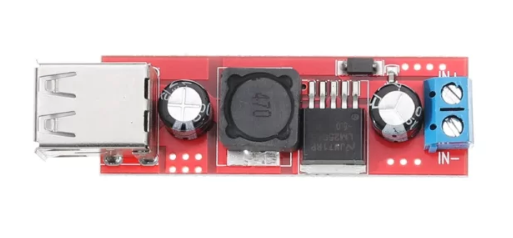
 Design with usb module 5v in Cirkit Designer
Design with usb module 5v in Cirkit DesignerIntroduction
The USB Module 5V is a versatile and essential component for powering various electronic projects and devices. It converts the standard 5V output from a USB port into a stable power supply, making it ideal for use in prototyping, DIY projects, and embedded systems. This module is particularly useful for powering microcontrollers, sensors, and other low-power devices.
Explore Projects Built with usb module 5v
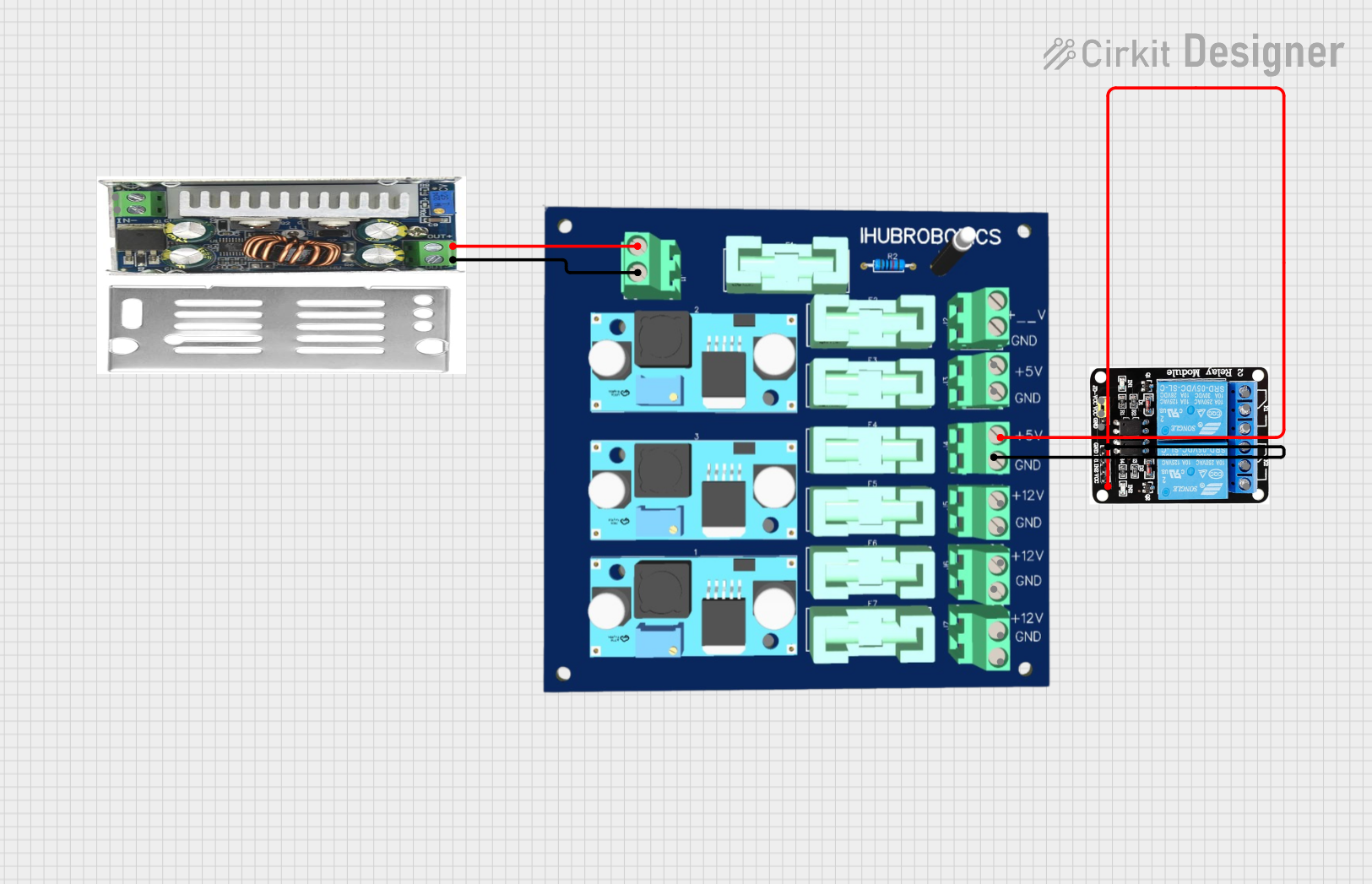
 Open Project in Cirkit Designer
Open Project in Cirkit Designer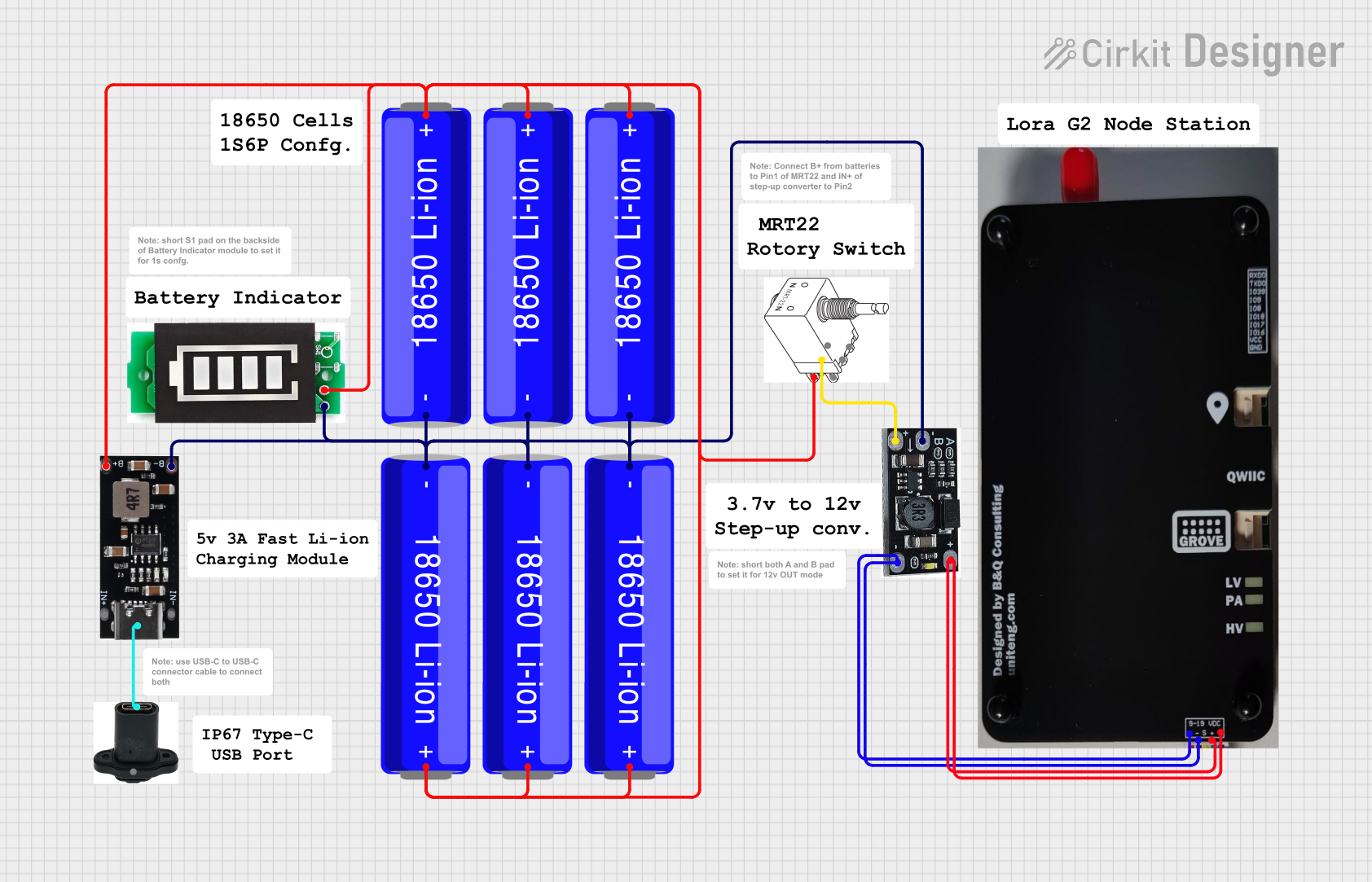
 Open Project in Cirkit Designer
Open Project in Cirkit Designer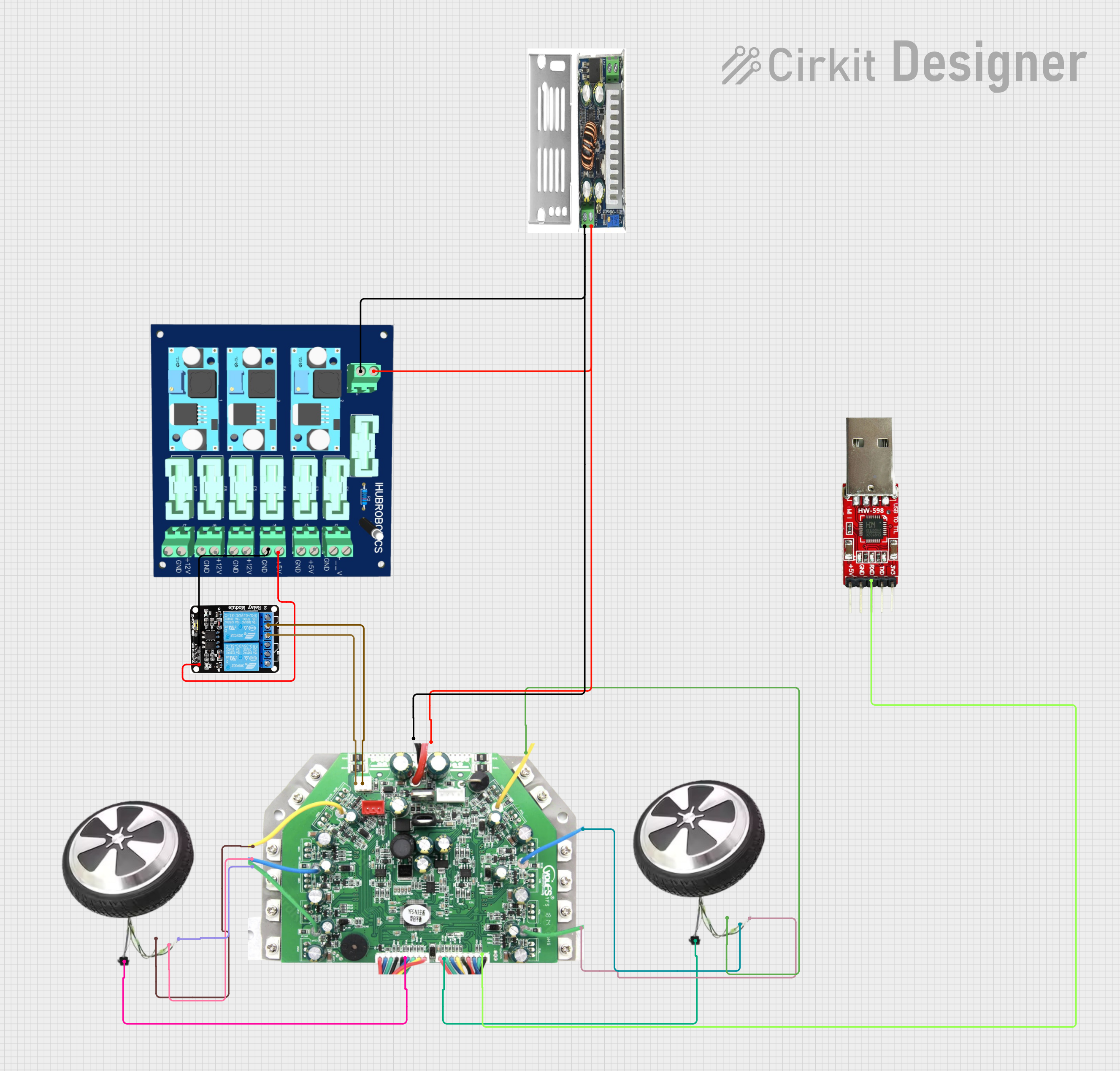
 Open Project in Cirkit Designer
Open Project in Cirkit Designer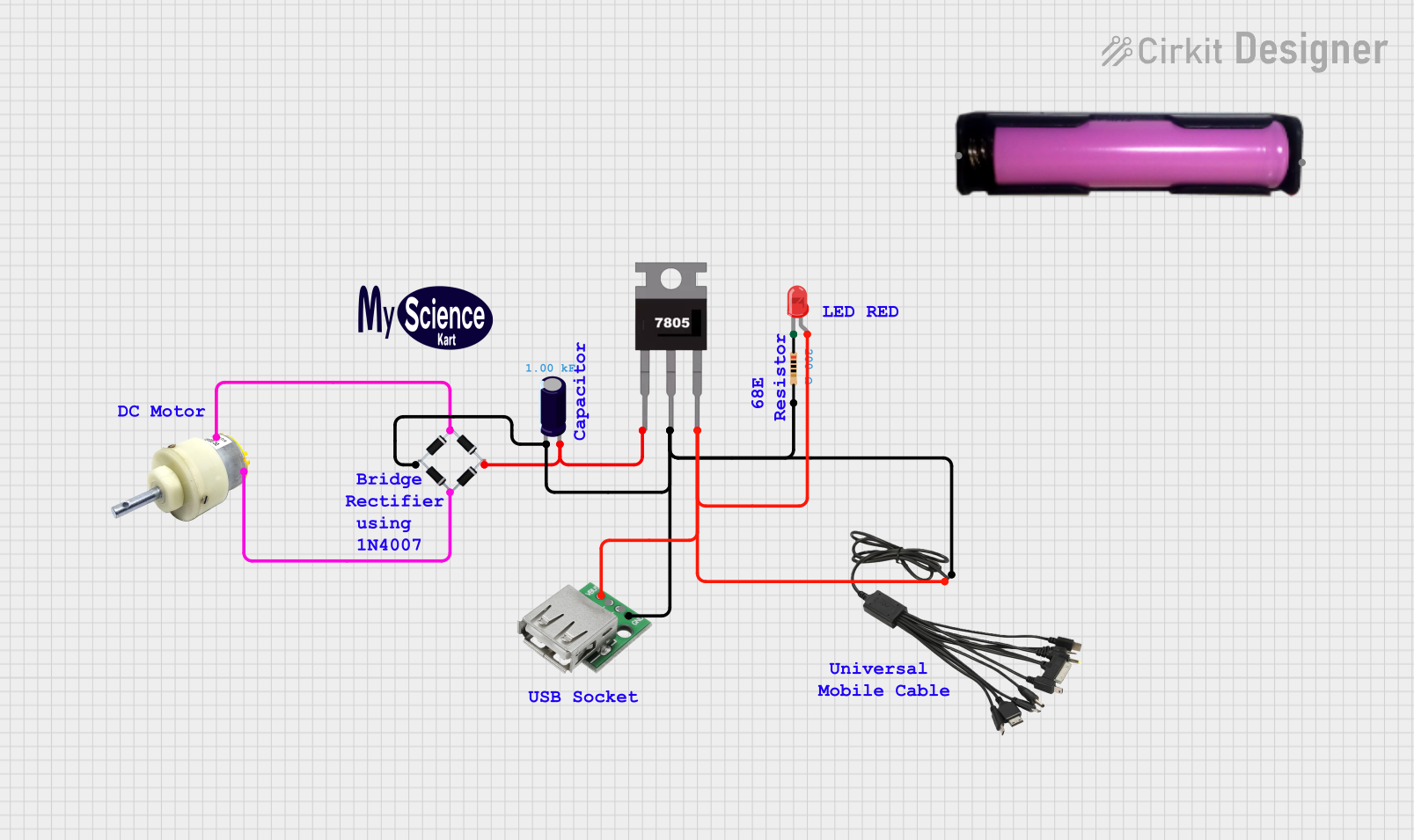
 Open Project in Cirkit Designer
Open Project in Cirkit DesignerExplore Projects Built with usb module 5v

 Open Project in Cirkit Designer
Open Project in Cirkit Designer
 Open Project in Cirkit Designer
Open Project in Cirkit Designer
 Open Project in Cirkit Designer
Open Project in Cirkit Designer
 Open Project in Cirkit Designer
Open Project in Cirkit DesignerCommon Applications and Use Cases
- Microcontroller Power Supply: Provides a stable 5V power source for microcontrollers like Arduino, ESP8266, and Raspberry Pi.
- Sensor Power Supply: Powers various sensors and modules in electronic projects.
- Portable Projects: Ideal for portable projects where a USB power bank can be used as a power source.
- Prototyping: Useful in breadboard and prototyping setups to provide a reliable power supply.
Technical Specifications
Key Technical Details
| Parameter | Value |
|---|---|
| Input Voltage | 4.75V - 5.25V (USB) |
| Output Voltage | 5V |
| Output Current | Up to 1A |
| Efficiency | Up to 90% |
| Operating Temperature | -40°C to 85°C |
| Dimensions | 25mm x 15mm x 10mm |
Pin Configuration and Descriptions
| Pin Number | Pin Name | Description |
|---|---|---|
| 1 | VCC | 5V Output |
| 2 | GND | Ground |
| 3 | D+ | USB Data Positive (not used for power) |
| 4 | D- | USB Data Negative (not used for power) |
| 5 | ID | USB ID (not used for power) |
Usage Instructions
How to Use the Component in a Circuit
Connect the USB Module:
- Plug the USB module into a USB port or connect it to a USB power source.
Powering a Microcontroller:
- Connect the VCC pin of the USB module to the 5V input pin of the microcontroller.
- Connect the GND pin of the USB module to the ground (GND) pin of the microcontroller.
Powering Sensors and Modules:
- Connect the VCC pin of the USB module to the power input pin of the sensor or module.
- Connect the GND pin of the USB module to the ground (GND) pin of the sensor or module.
Important Considerations and Best Practices
- Current Limitation: Ensure that the total current draw of the connected devices does not exceed the maximum output current of the USB module (1A).
- Heat Dissipation: If the module gets warm during operation, ensure proper ventilation to avoid overheating.
- Stable Connections: Use reliable connectors and cables to prevent intermittent power issues.
Troubleshooting and FAQs
Common Issues Users Might Face
No Power Output:
- Solution: Check the USB connection and ensure the power source is providing 5V. Verify that the VCC and GND connections are secure.
Overheating:
- Solution: Ensure that the total current draw does not exceed 1A. Provide adequate ventilation or cooling if necessary.
Intermittent Power:
- Solution: Check for loose connections or faulty cables. Use high-quality connectors and cables to ensure stable power delivery.
FAQs
Q1: Can I use this module to power an Arduino UNO?
- A1: Yes, you can use the USB module to power an Arduino UNO by connecting the VCC pin to the 5V pin and the GND pin to the GND pin of the Arduino.
Q2: What is the maximum current output of this module?
- A2: The maximum current output of the USB module is 1A.
Q3: Can I use this module with a USB power bank?
- A3: Yes, you can use a USB power bank as a power source for the USB module.
Example Code for Arduino UNO
Here is an example of how to use the USB module to power an Arduino UNO and blink an LED:
// Example code to blink an LED using Arduino UNO powered by USB Module 5V
const int ledPin = 13; // Pin number for the built-in LED
void setup() {
pinMode(ledPin, OUTPUT); // Set the LED pin as an output
}
void loop() {
digitalWrite(ledPin, HIGH); // Turn the LED on
delay(1000); // Wait for 1 second
digitalWrite(ledPin, LOW); // Turn the LED off
delay(1000); // Wait for 1 second
}
This code will blink the built-in LED on the Arduino UNO at 1-second intervals. Ensure that the USB module is properly connected to the Arduino UNO as described in the usage instructions.
This documentation provides a comprehensive guide to using the USB Module 5V, covering its technical specifications, usage instructions, and troubleshooting tips. Whether you are a beginner or an experienced user, this guide will help you effectively utilize the USB module in your electronic projects.